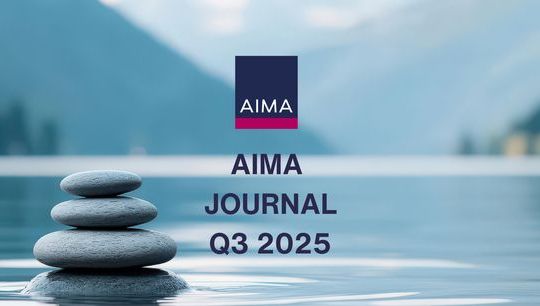Hedge fund administration: Past, present and future
By Joe Maxwell; Ron Tannenbaum, SS&C Globe Op
Published: 30 November 2020
The birth of modern third-party fund administration
The adoption of the “Ten Commandments[1]” in 1968 spawned the development of the offshore fund administration industry for US-based hedge funds. The Ten Commandments required a US-managed fund to have 10 administrative functions performed outside the US in order to avoid U.S. taxes on its offshore income. Required offshore functions included communicating with shareholders, accepting subscriptions of new shareholders, and maintaining the principal corporate records and books, among other provisions.
Under this regime, until 1997, offshore third-party administrators were located in tax haven jurisdictions and lightly staffed. They provided fund accounting, NAV calculations and some fund legal and regulatory reporting. By today’s standards, the Cayman, BVI, Curacao, Bermuda and other offshore administrators did very little other than complete the fund books and records and issue statements.
The 1997 Taxpayer Relief Act repealed the Ten Commandments and ushered in the modern world of fund administration as we know it today.
From 1997, hedge funds were allowed to self-administer their offshore funds. More importantly, fund managers and investors could consider outsourcing this function to other more expert and experienced on-shore independent third-party administrators. Third-party administration then grew rapidly to include varying degrees of technology, middle- and back-office outsourcing.
Over the next 20 years, investor demands for third-party governance, control and transparency, along with fund manager requirements for outsourced services, provided the environment for growth
The US onshore market for fund administration services created an enormous competitive advantage by deploying Wall Street trained financial and technology experts instead of the previously geographically constrained pool of offshore, tax haven-based accountants.
Since 2008 (post Madoff), all hedge fund investors and most financial regulators have a mandatory requirement for independent, third party administration. Hedge fund AuM has since migrated entirely away from in-house (self-managed) administration. The role of independent administrators matured dramatically. Investors have come to rely on administrators not just for NAV calculations and statements, but for transparent, independent governance, fund control and reporting.
Efficient processing of data has become the core task
Today, efficient administration with central governance and control is about building robust technology, managing data and running processes for the use of that data. Administration workflows centre on loading large data files over a 24-hour period. The administrator is responsible for cleansing, enriching and reconciling the data to third parties and producing on-demand, real-time exception driven reports on the results.
Fee pressure and expenses
Along with a rapid increase in hedge fund AUM came pressure on net returns, combined with a downward drift in management and performance fees. Administrators responded to fee pressure by offering complete outsourced services as part of the administration function at efficient and scalable costs. The combined trends towards lower fees and increased investment in technology drove more AUM into the hands of the largest, most cost-effective administrators. As a result, the last 15 years have been driven by the wholesale consolidation of assets under administration to the largest bulge bracket providers.
The concentration in administration assets occurred through a process of roll-up mergers and acquisitions, along with individual hedge fund managers moving their own funds to more efficient, scalable, higher quality providers.
Sustainable growth supported by flawless fund conversions
Whether gaining clients and AuA through acquisition or hedge funds changing fund administrators of their own volition, the largest administrators must be consummate experts in converting rapidly each fund’s books and records to the accounting system of the acquiring entity. Fund conversions are now the lifeblood of large administrators. SS&C alone, as one of several bulge bracket administrators, has converted hundreds of billions in assets to its general ledgers and data hubs.
By partnering with large administrators, asset managers are able to rationalize services and technology providers, control costs, and future-proof their operations while relying on scalable technology to support growth in increasingly complex and sophisticated investment strategies.
The Future of Hedge Fund Administration
Over the years, hedge fund administrators have dealt with changes in the industry they serve. Increased regulations, diversity of products, and trade volumes have required fund admins to transform their business. In one example, fund managers saw an opportunity with stat arbitrage strategies. which forced fund admins to find ways to accommodate their changing needs. For some funds, the average daily trade volume went from 10,000 to millions of trades per day. Fund admins that wanted to stay relevant had to turn to technology for the answer. Faster processors, less expensive storage and the coming of cloud technology into financial services is accelerating this technology transformation.
Keeping up with client demands is the primary objective of fund admin technology initiatives. To compete in the fund administration industry, flexibility in dealing with clients is now just table stakes. Firms that cannot support its hedge fund clients’ changing needs will quickly fall behind. This has changed the typical hedge fund admin from a purely “services-first” organization to a “technology-first” organization. Administrators rely heavily on innovations in technology to enhance their offerings. Capitalizing on these innovations and turning them rapidly into client advantages is the key differentiator within the fund admin world. Fund managers are acutely aware of this and have made technology capabilities a top consideration when selecting a new fund administrator. At the table, a fund admin now has to prove its tech prowess to prospective clients in order to win the mandate.
The added imperative of resiliency in the case of a large-scale BCP issue is now also in the forefront. The “Live Experiment” that hit the Financial Services Industry in March of 2020 put extra emphasis on process and efficient connectivity of staff. Can you get your deliverables done even if your firm is forced to work 100% remotely? This question, which previously sat somewhere low in the BCP section of everyone’s RFP is now highlighted and raised to the top of the list.
Direct client requirements aside, the next wave of transformation for fund administration firms will be defined by the need to transition to a highly process-efficient and remote organization. After the 2020 Pandemic in which many firms operated with large parts of their organization remote, the question of the importance of real estate will need to be reviewed. Will expensive office space still be expected after the demonstrated ability to deliver remotely is evaluated? With the availability of tools that bring artificial intelligence and remote connectivity into the forefront, fund admins need to turn inward and look for ways to gain deep process automation across a connected labor and client base. Service delivery will become faster and with lower error rates. A fund admin’s knowledge workers will be spending more time adding value by being consultative to their clients rather than performing repetitive processing tasks.
To accomplish this transformation, fund admins will need to go back to business process reengineering techniques that started in the early 2000s. Lean for Service reviews of the fund admin business, combined with new artificial intelligence technologies, will yield some of the greatest process improvements for the fund admin business. The ability to automate what previously was considered only a manual process is far greater now with AI techniques such as machine learning and natural language processing. Fund administrators that make the investment of looking inward and changing their process workflows with these new tools will gain efficiency and accuracy never before experienced.
The ability to deliver more data, faster, with greater accuracy and highly integrated remotely with staff and clients is where the fund admin industry is headed. Fund managers and administrators will become highly integrated through technology as a way to drive increased value. These tight partnerships will provide enhanced transparency, reduced complexity and lower costs within the fund manager’s business. Current practices such as shadow administration will no longer be needed. However, not every fund admin is well positioned to make this technical transformation. The future of fund administration will be owned by those that recognize these imperatives and create business-aligned technical strategies that deliver on the full capability of the most current technology for clients.
[1] Before 1997, Tax Code section 864 provided that a non-US corporation would not be treated as engaged in a US trade or business and would not be subject to US tax on all of its income if it: traded solely for its own account; was not a dealer; and, did not have its principal office in the United States. The US Treasury listed ten activities (the Ten Commandments) all required to be performed by the non-US corporation outside the United States to avoid US taxation.




